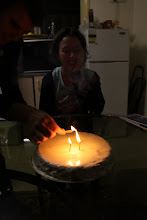The curious ‘black mirror’ or Claude glass was a mirror not dissimilar in size and shape to a cosmetic compact mirror. The difference was a dark tint and slightly convex surface. Geoff Park uses the literal lens of the Claude glass as metaphor for the social, political and emotional lenses that affect the process of looking and tint the image that results. Park focuses largely on the symbolic role of these lenses in the transition of rural land into ‘landscape’. However, there are parallels between the anxieties that the popularity of the Claude glass reflected and the fruitless search of Mitchell’s European tourists’ for the ‘real’ Orient outside of their own representations of it, both in literature and at the numerous international expositions held since the “Great Exhibition of the Works of Industry of All Nations” in London in 1851.
The Claude glass provided two useful illusions for the artist or tourist chasing the picturesque in the 18th and 19th century. The first effect of the Claude glass was to render sight / the site more ‘picture-like’; the dark tint separated out tones and the convex shape softened the edges of the objects. The sprawl of suburbia during industrial revolution had made strange once familiar countryside environments, and in their place, the pictorial representations of such sites must have seemed more and more familiar, allowing the beholder to indulge in a nostalgic and sentimentalised relationship with places that only existed in images (Park, 118). This ‘picturesque’ vision that the Claude glass made clear to the viewer allowed the world to be quickly marked out as an object, an object at least partially determined by what the viewer believed it should look like.
The second effect of the convex surface of the Claude glass was to miniaturise the landscape, far beyond the scope of the camera lucida, to render any outlook literally in the palm of one’s hand. This miniaturisation, alongside the picture-like rendering, gave a sort of control paired with detached, diplomatic immunity, because of the artificial distance it created between the viewer and the site. This is not specific to the Claude glass-wielding suburbanite of imperial Britain. Like Mitchell’s tourists in Cairo equipped with dark glasses and camouflaging attire, the Claude glass allowed its user the possibility of an ‘observing gaze’; to be ‘surrounded by yet excluded from’ the scene before them (Mitchell, 223). Indeed, this desire to hold the whole world in one’s hands spills over into the international exhibition, a much more spectacular reflection of the same desires and fears. Mitchell emphasises, ‘World exhibition here refers to…the world conceived and grasped as though it were an exhibition’ (Mitchell, pp 222, my italics). The term grasped connoting not only the will and desire to know, but to have and to contain.
In the case of contemporary exhibitions, curatorial desire and pressure to contain and condense the world continues. One of the significant roles of biennials across the world today is as ‘the places where things perceived as irreconcilable are brought together from all directions’ (Hug pp. 33). Furthermore, Hug sites the specific goal of the São Paulo Bienal as the making possible a redistribution of culture in the world (32). The goal of the biennial curator is to leave no margin outside of their hand, that no new talent may remain hidden (Hug, 33). Yet, Hug’s declaration that the city of São Paulo echoes the ‘showroom’ of the exhibition (34) reminds us that a world held so tightly, miniaturised like an image in a Claude glass is both constructed around the fears and desires of its holder but as an image also constructs and informs further images (Mitchell, 224).
Bibliography
Alfons Hug, “The Bienal as a Free Territory” in 2004 São Paulo Bienal. São Paulo: Fundação Bienial de São Paulo, 2004, pp. 30 – 37
Timothy Mitchell, “The World as Exhibition,” in Comparative Studies in Society and History 31:2 (April 1989), pp. 217 – 236
Geoff Park, “Theatre Country” in Theatre Country: Essays on Landscape and Whenua, Wellington: Victoria University Press, 2006, pp. 113 – 127
Wednesday, October 7, 2009
On Claude Glasses and Biennales
Labels:
biennale,
black mirror,
claude glass,
geoff park,
timothy mitchell
Subscribe to:
Post Comments (Atom)

No comments:
Post a Comment